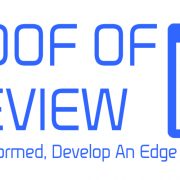A Malta-based stablecoin issuer, “Stasis” recently employed the services of accounting firm BDO Malta in order to conduct quarterly & yearly audits of their financials, which will include the euro backed reserves pegged to the startup’s EURS token.
This union comes as an effort to eliminate any doubts that EURS stablecoins are indeed backed in a one-to-one fashion by euros. The current trend with investors and traders is that many are wary of such claims by any stablecoin issuer, due to the surrounding fears around the dominant Tether USDT stablecoin.
As reported by CoinBeat in the past, Tether’s USDT tokens suffered a loss of parity with the U.S dollar earlier this year in October, when global doubts about the company actually holding one dollar per token arose.
It’s been more than a year since Tether reprised their promises of regular audits in order to prove that they held significant fiat collateral, but as we all know, so far, they have not lived up to these promises. Instead, Tether cut ties with their auditing firm Friedman LLP in January this year and opted to produce documents prepared by their law firm in June as well as their bank in November which supposedly vouch for the existence of their fiat.
Stasis CFO Vyacheslav Kim, had the following to say:
“The recent conversation around stablecoins has hinged on two things: compliance and transparency. By providing verification by a top accounting firm, in addition to EURS’ existing regulatory compliance under Maltese law, we’ve established EURS as a standout option for European investors.”
In addition to Stasis’s planned audits, BDO Malta, which is a member of the BDO International network of accounting firms, who operate in more than 160 countries as per their website, claim that they will “provide weekly cash reserve verification” of their fiat collateral reserves which back their EURS token, claimed Stasis with the first report being published last Thursday.
The issuance of stablecoins continues to grow as an increasingly crowded and competitive space of the crypto industry, with many providers seeking ways to reassure an extremely skeptical market by ways of making their partnerships with prominent accounting firms public.
In the last month alone, Circle, who provide their dollar-backed token – USDC, published an attestation of their dollar collateral through firm Grant Thornton LLP, Gemini, who issue the USD-pegged Gemini Dollar did the same through firm BPM and lastly Paxos, who issue the dollar-backed Paxos Standard, recently published their attestation from firm Withum.
Audits VS Attestations?
Statis, however, stands apart from the crowd by promising comprehensive audits.
Texas A&M University professor Michael Shaub, stated “I would take much more heart” from that of a full audit as opposed to verifications or attestations.
Shaub went on to explain the differences between verifications, attestations and audits, stating that an audit “is applied broadly to the financial statements” – including income statements, cash flow statements and balance sheets – while an attestation (of the sort Circle, Gemini and Paxos publish) “is limited to some narrow representation.”
“The level of assurance is very similar,” stated Shaub, while an audit provides much more important levels of context which goes far beyond an isolated snapshot: “You can reach more of a conclusion of, is that money likely to be in the bank tomorrow? Was it in the bank yesterday?”
On the other end, a verification quite simply provides far less context & does not necessarily need to be carried out by a qualified accountant and with Tether as mentioned above, they published a verification which was provided by their law firm.
With a verification, the firm handling it and the accountant or lawyer would decide on the procedure with the accountant carrying it out and this, of course, is a massive contrast as to the rigorous standards which are found with attestation or audits.
Are Audits For Stablecoin Difficult To Obtain?
With Stasis’s first promised audit set for the first Q of 2019, these processes have become much more notable since many stablecoin issuers, including Tether, claimed that they are currently unattainable in the stablecoin arena.
Gemini co-founder and president Cameron Winklevoss, said in a tweet back in October, that “there is no financial report framework [with respect to] to audit conformity [with] a stablecoin. So you can’t perform an ‘audit.’”
He instead continued, by stating that issuers need to “rely on a 3rd party to attest to whether an assertion (that there is a 1:1 peg) is accurate.”
Despite this, a Stasis spokesperson claims that “BDO Malta will perform full audits once a quarter, plus verifications every week.”
Sam Spiridonov, an audit partner at BDO who was behind the signing of Stasis’s first weekly verification, claims that the “audit will cover all the financial statements of STSS (Malta) Limited, including the euro deposits.”
On the other end, Tether continues to dominate the stablecoin arena, despite all the recent controversy surrounding the company.
Currently, the market cap for Tether sits at $1.9 billion, making it the seventh-most valuable cryptocurrency overall with Stasis’ EURS in comparison not even scratching the top 100 with a market cap of only $30 million, according to stats from CoinMarketCap.
Would you consider investing in a stablecoin that promises comprehensive audits Could Stasis be the catalyst for more investors taking the plunge into fiat-backed currencies? Let us know your thoughts.
Follow CoinBeat on Facebook, Twitter & Telegram
Subscribe to our CoinBeat Newsletter
Submit an article to CoinBeat
View live Marketcap Prices here







Comments